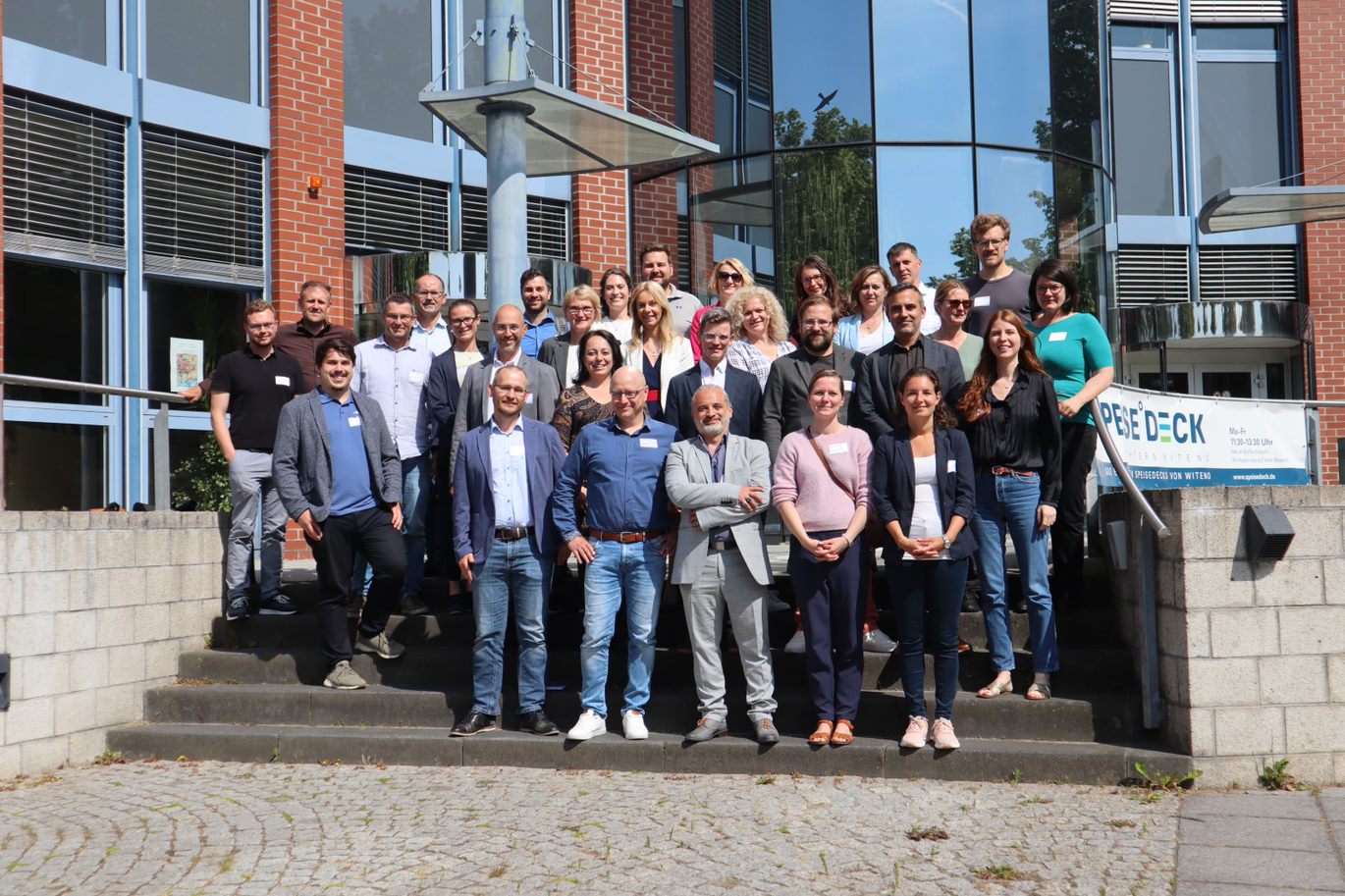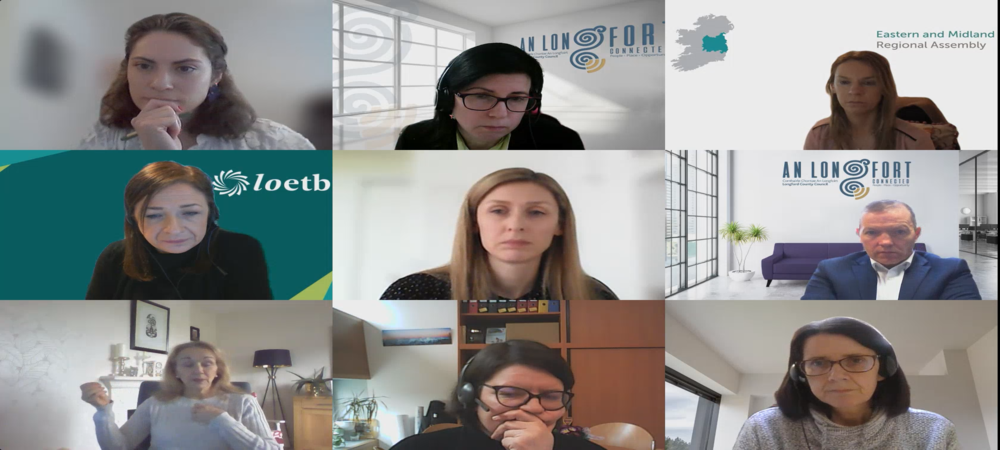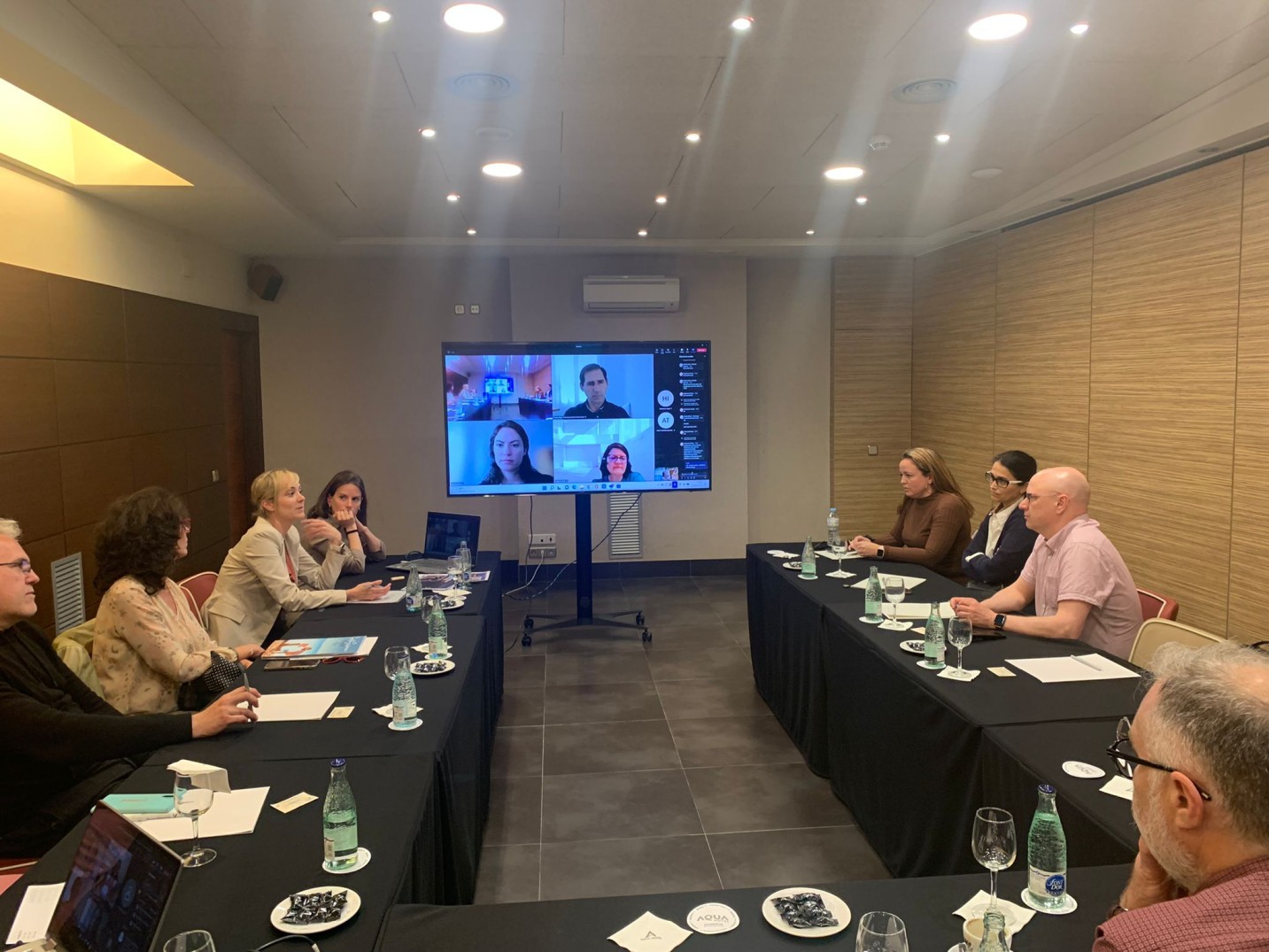
Internet of Things (IoT) Platform in Lower Austria
Lower Austria has been working on developing a common approach to tap the potential of IoT solutions and technologies in municipalities.
Next2Met is an innovative interregional exchange project which aims at increasing attractiveness - for knowledge, opportunities, and capital - of territories located close to metropolitan areas. The project brings together 6 regional and local actors and 1 Advisory Partner sharing this common challenge and working together to implement policy solutions:
“Soft digitalisation measures
to increase attractiveness of Next2Met regions
• Regional Council of Päijät-Häme, Finland
• Ecoplus. The Business Agency of Lower Austria, Austria
• Barcelona Provincial Council, Spain
• Eastern and Midland Regional Assembly, Ireland
• Podlaskie Voivodship, Poland
• WITENO GmbH, Germany • Conference of Peripheral Maritime Regions of Europe (CPMR), France
This 3.5 year-long project started on 1 August 2019 and was officially launched in Brussels early September and will last until January 2023.
Compared to capital regions, ‘next to met’ areas are confronted with a lack of tools and critical mass of research, development and innovation, and therefore struggle with keeping experienced small and medium-sized enterprises, as well as highly-qualified people in the region.
Next2Met focuses on these territories surrounding metropolitan areas because they not only offer benefits, but are also bottlenecks to attracting and retaining knowledge, people and capital.
In this context, Next2Met aims at improving policy instruments (ERDF Operational Programme and 2 local instruments) through interregional learning processes in 6 different regions. To achieve this, Next2Met partners will focus on soft digitalisation measures, making sure that public policy supports an increased attractiveness of its territories. Each of those regions will see projects financed which will promote innovation chain involvement and mobilise structural and local funds.
Digitalisation, cooperation and specialisation are the cornerstones that form the basis of regional growth and this project aims to support the regions involved to fully exploit the potential in order to become more attractive “next to met” areas.
€1,358,584.00
Research and innovation
Next2Met project will create a policy framework in participating regions that focuses financial resources and innovation chain activities on promoting regional attractiveness. It will create the conditions to design, develop and commercialise digitalisation products and services that help regional priority sectors to become the unique selling point of these ‘next to met’ areas.
This will be achieved by learning about useful good practices from Next2Met partners which will then be included in 6 action plans that are specifically tailored to each region. These action plans should help policy-makers address the identified needs and transfer available solutions.
Proposed solutions include strengthening capacity of priority sectors (RIS3), using innovation in soft digitalisation measures and ensuring cooperation along the innovation chain, amongst others.
In line with Europe 2020, the priority axis is designed to strengthen research, technological development and innovation and support the shift towards a low-carbon economy in all sectors. All ERDF measures draw from the regional development strategy and are in line with the regions' smart specialisation priority areas and themes selected within the Innovative cities programme.
The programme has ambitious targets: new innovations, innovation clusters and R&D investments; sustainable urban development, new practices and tools for innovation platforms, improved R&D environments of applied research, growth of small research units for front-line research, green and creative economy business operations, and renewed industrial value chains. The programme invests in innovative solutions, research and technological infrastructure and equipment and encourages commercialisation of new solutions.
Next2Met regions, shaded by the metropolitan areas next to them, need more businesses, people, visitors and capital. Digitalisation and the delivery of innovation are seen as a way to support this. While these are included in the policy instrument, funding has not been significantly targeted towards them. With a clearer focus, the policy instrument may provide funding for project proposals promoting quadruple helix investment in R,D&I for digitalisation measures. There is still room for this within the programme: 3 more calls are foreseen in 2019 and 2020, with 1.8M€ available annually.
The Policy Instrument should support Lower Austrian companies to increase efficiency and speed of digital transformation. In January 2018, it funded the House of Digitalisation measure to achieve this aim.
The first step is establishment of a network of research institutions and intermediaries (achieved in May 2018). The second is the Virtual House of Digitalisation (operational in autumn 2018). The final step will be the physical house (built in 2022). It is designed to become a point of attractiveness for the regional economy.
The network supports investment in high-growth, innovative technology-oriented companies; start-ups; low-threshold access to scientific institutions. Research projects will be supported by regional CALLS such as: "RTI call digitisation" (applied research collaborations between science and business) or "Call Economy 4.0" (conception of new process, process and service innovations). The current S3-strategy will be updated in 2019 and linked to the digitalisation strategy.
The House of Digitalisation is at the beginning. It requires input from other already implemented digitalisation projects. Next2Met should help to learn about methods of innovation delivery by the regional innovation chain, raising awareness of the importance of digitalisation for (professional) life, how a new space for creativity should be created to initiate and implement projects and how to support companies, especially SME, to put ideas on an economically viable foundation.
Barcelona Provincial Council, Technology Services and Corporate Systems Services Directorate provides resources to local governments through the Service Catalogue. Its objective is to grant economic, technical and material resources to local governments. To rebalance territorial asymmetries, it pays special attention to municipalities with less population, resources and infrastructures. Resources should ensure social cohesion, stimulate local economic development, enhance employment and guarantee balanced, sustainable territorial development.
The Policy Instrument operates in coherence with the Catalan Digital Agenda and RIS3 Strategy. Its Technologies and Digital Innovation chapter provides equipment, funding and consultancy related to: technological service platform for urban management, integrative urban management technologies, diagnostic study for smart city strategies / action plans, ICT governance. 19 municipalities are using the technology provided after having used the policy instrument for needs assessment.
From May 2019, the Catalogue will be reviewed according to new government priorities (elections in May 2019). Interregional learning in Next2Met can provide input. Possible improvements include: more or better managed digitalisation resources; focus on delivery of innovation, with updates produced in cooperation with regional innovation players; adjusted digitalisation resources to secure balanced territorial development beyond the metropolitan area.
The NPF sets the spatial, economic and planning and investment context for Ireland until 2040. It has multiple objectives, including balanced regional development, reversing rural population decline by strengthening rural economies & communities, improving rural broadband connectivity and promoting new economic opportunities through digital connectivity.
NPF funds urban regeneration to secure compact, sustainable urban growth and rural regeneration, enabling high quality job creation in rural areas, address rural decline and support improvements in towns and their hinterlands that enhance their attractiveness as a place to live, work & visit.
NPF replaces older spatial policies and aligns spatial planning with infrastructural spending for the first time. To implement the NPF, EMRA is creating Regional, Spatial and Economic Strategies (RSES) to guide development at regional and local level.
Competitive funding bids for both urban and rural regeneration will be published. The RSES will set the policy context that guides allocation of funds, so that the NPF goals are delivered at local and regional levels. Roll out of broadband and digital initiatives will be a component of calls.
The RSES has a 2-year monitoring and review component. At these review points, its policies can be amended in light of past performance to better realise its objectives, including promotion of RIS3 activities. This iterative review will allow Next2Met learnings to directly inform NPF implementation.
The objective of Podlaskie Operational Programme is to increase competitiveness of the region’s economy based on the regional strengths and assets.
A number of specific priorities within the OP are of relevance to Next2Met objectives:
• IP 2c - funding development of electronic services in administration and e-health, in addition to digitisation of resources held by public institutions.
• IP 3c - increasing the use of ICT in SMEs (implementing, extending and modernizing IT systems; B2E, B2B, B2C)
• IP 3a - provision of services (incl. e-services) for enterprises by business environment institutions; specialised consultancy for enterprises in the use of digital technologies and digital business management models.
• IP 1b - knowledge transfer, innovation and R&D in enterprises
• IP 10i, IP 10iii, 10iv - ICT competences and qualifications at different levels of education; development of digital competences of employees and business owners.
Podlaskie region needs to facilitate cooperation and joint initiatives between enterprises, R&D centres and higher education players in key regional areas of smart specialisation and innovation opportunity. The OP must help to connect local authorities, scientific and research units and business representatives in order to popularise and develop initiatives based on soft digitalisation measures. Next2Met examples from partner regions and looking to integrate the various funding opportunities made available in the above described priorities.
Mecklenburg-Vorpommern OP ERDF links the priorities of the strategy Europe2020 with the major economic, social and ecological challenges of the Land. ERDF investments should strengthen the innovation capacity of the region and broaden its economic base while creating even more and better jobs.
Three Axes are particularly relevant to the objectives of Next2Met: TO1 provides support to Research & Development and innovation (in line with the project objective for innovation chain cooperation and digitalisation), TO2 supports competitiveness of SMEs (innovation chain players, who can make digitalisation tools a market reality) and TO4 provides support to integrated sustainable urban development (linking to the aim for increased attractiveness).
The programme foresees measures to support SMEs, research projects in enterprises, alone or in cooperation with research organisations and city authorities (projects in 23 major and medium sized municipalities).
The OP needs to be integrated with all regional strategies, in a concentrated effort to promote regional attractiveness and successful, long-term digitalisation initiatives. To this end, focus should be placed on its contribution to priority sectors (RIS3) but also on its link with the recently launched Digital Innovation Area of Mecklenburg-Vorpommern. This seeks to establish a network of digital innovation centres and a start-up welcome area to support regional digital transformation.

Lower Austria has been working on developing a common approach to tap the potential of IoT solutions and technologies in municipalities.

Eastern and Midland Regional Assembly (EMRA) has been working on developing a new "Digitalisation Roadmap". Find out more below.

Mecklenburg-Vorpommern focused on developing digital solutions and strategies in order to make rural areas more attractive.

On 14 June 2023, Next2Met partners and stakeholders came together for the final dissemination event of the project, during an on-site meeting hosted by WITENO.

Podlaskie Voivodeship (PL) has been working on developing the use of digital tools for communication with citizens and entrepreneurs.

Barcelona Provincial Council has been working on reducing digital territorial asymmetries and boosting the attractiveness of non-metropolitan areas.

Päijät Häme region has made digitalisation its ally in improving the quality of life of its residents.

The Eastern and Midland Regional Assembly (EMRA) held an online workshop with key stakeholders from the Midland region on 14th February 2023.

Next2Met Policy Learning Event & study visit

Discovering Barcelona province digital projects